Is Croatia Safe for Solo Female Travellers? An Honest Guide
So, is Croatia safe for solo female travellers? Well, I’ve travelled Croatia solo, wandered Dubrovnik’s stone alleyways, watched the sun set over Split harbour, explored Roman ruins in Pula, and yep – I totally get why you’re asking. You want to feel excited about your trip, not anxious. You’re not here for the sugar-coated version – you just want the real answer, from someone who’s actually been there, done it, made all of the mistakes so you don’t have to.
I’ve travelled solo all across Europe, including Croatia – from the busy old town walls of Dubrovnik to the quiet, underrated beauty of Zadar – and I know how overwhelming it can feel planning a trip alone as a woman. This guide isn’t just about facts and figures (though you’ll get those too!) – it’s about how it feels to be a woman alone in Croatia. The little things that made me feel safe – or didn’t. The honest truth about what I loved, and what I’d do differently next time.
We’ll talk about everything in this guide – from local attitudes to crime stats, scam warnings to public transport, what it’s like walking alone at night, and whether Dubrovnik or Split feels safer. Plus, I’ll also share the little things I wish someone had told me before I landed!
Disclaimer: Some of the links on this blog are affiliate links. That means if you click on one and make a purchase, I may earn a small commission – at no extra cost to you. I only recommend products, places and services I genuinely love and use on my own solo travels. Thank you for supporting my adventures so I can continue to provide free content on this blog! 💛
Is Croatia Safe for Solo Female Travellers?
Short on time? Here’s the quick answer: Yes, Croatia is generally safe for solo female travellers – and it’s one of the more comfortable places in Europe to travel alone as a woman. Violent crime is rare, the overall vibe is relaxed, and local people are generally kind, respectful, and very used to tourists. However, Croatia is definitely not perfect. Like everywhere in Europe, how comfortable and safe you feel will depend on how you travel, where you go, and what you’re prepared for (which is where this guide comes in!)
In my own experience, I felt very safe walking alone in cities like Dubrovnik and Split, using public transport, and even going out at night – but that doesn’t mean I switched off completely. Poverty is a bit of a thing in some areas of Croatia, pickpocketing can happen in crowded areas, some men may test boundaries with overly friendly behaviour (especially in bars or clubs), plus there are a few classic tourist scams to watch out for – more on this later!
During my trip, one of the key things I noticed was visible signs of poverty in certain, less touristy neighbourhoods and in smaller towns like Sibenik and Trogir. You might spot locals collecting bottles or searching bins for recyclables, especially late at night or early in the morning. During my solo trip to Croatia, they didn’t interact with me at all, but I still made a mental note to stay alert, particularly when walking back to my accommodation alone. It’s something to keep in mind, not in a judgey way, but as a reminder to stay aware of your surroundings.
Katie’s Top Tip: Just because somewhere feels safe, doesn’t mean you should ignore your gut instincts. If something or someone gives you an off vibe, there’s no need to explain or even be polite. Just remove yourself and move on. You don’t owe politeness to anyone who’s making you feel uncomfortable.

Understanding Croatia’s Culture
When it comes to solo female travel, understanding the local culture is just as important as checking a country’s crime stats. The underlying culture of a place will determine how you’ll be received by locals and, as a result, how confident you’ll feel blending in as a solo female traveller.
Croatian culture is warm, proud and often traditional, especially in smaller, less touristy towns. Family is a big deal here, and locals value courtesy, modesty, and respect – especially from strangers. During your trip to Croatia, you’ll find that Croatians are usually polite and friendly, but they’re not overly forward or touchy-feely with people they don’t know. It’s a bit more reserved than somewhere like Spain or Italy, which, for me, made solo travel feel a lot less intense! Tourism is also a huge part of the economy here, so locals are very used to travellers and won’t look twice at the sight of a woman exploring alone.
Katie’s Top Tip: Don’t automatically assume coldness if someone seems reserved. A friendly smile and a respectful attitude will usually melt the ice if getting to know some locals is on your Croatia bucket list!
Attitudes Towards Women in Croatia
So, how are solo female travellers really perceived in Croatia? Honestly? Pretty neutrally – which is exactly what you want as a solo female traveller. Most Croatian people don’t make a big deal out of a woman being alone and you’re not likely to stand out or draw unwanted attention because of it.
However, I think it’s important I note that Croatia still has fairly traditional gender roles, especially in rural areas. This doesn’t mean you’ll be judged, but it does mean you might notice older, local men offering to help with bags or being surprised you’re alone. It’s usually meant in a way that is well-meaning, not creepy, but of course, if you feel uncomfortable, remove yourself from the situation quickly. In touristy cities, attitudes are much more modern and laid-back.
One moment that really stood out to me during my time in Split was stumbling across a protest in Peristil Square. The group was advocating for more traditional, restrictive roles for women, based on their religious beliefs. As a solo female traveller, I’ve got to admit that witnessing this made me feel more than a little sad and uncomfortable, and took some of the shine off my trip. These kinds of demonstrations do still happen in Croatia’s larger cities and can definitely feel jarring if you’re not expecting them.
But I feel it’s also important for me to say this: most people in Croatia don’t share those views at all. I didn’t experience any direct sexism or harassment during my trip and in general, locals were respectful, kind, and welcoming. Still, it’s a reminder that even in beautiful places, you can come across unexpected, uncomfortable moments. You can’t stop them, so it’s how you deal with them and move on that matters.
Katie’s Top Tip: If you ever feel cornered in conversation, a casual “my boyfriend is meeting me later” usually does the trick. Don’t be afraid to make things up to keep yourself safe and comfortable.
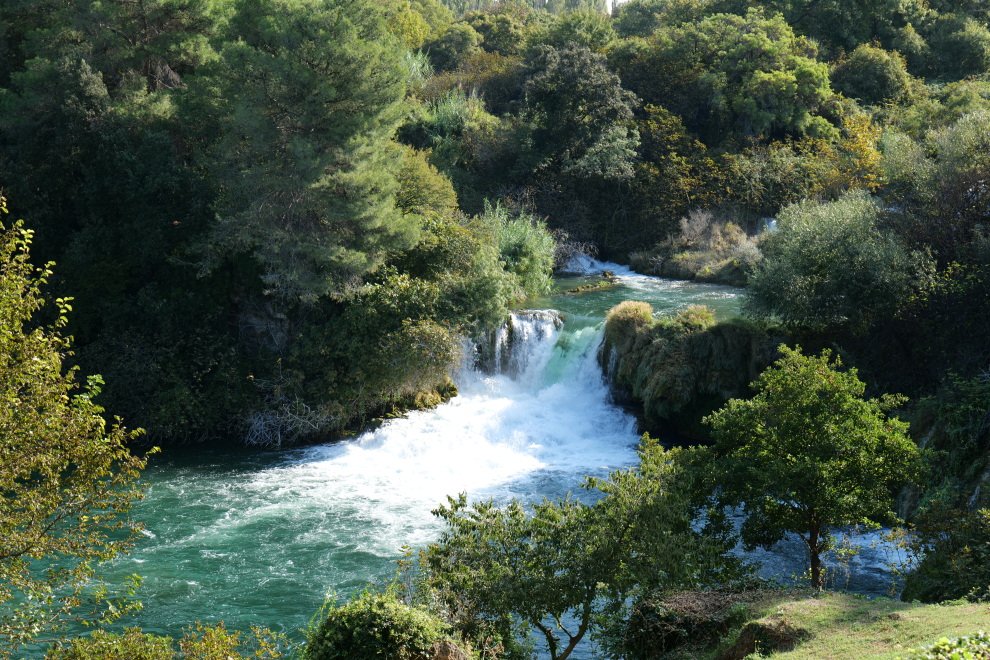
How to Dress in Croatia
Let’s talk outfits, because, yep, how you dress can absolutely affect how you’re perceived, especially as a woman travelling solo. The good news is that Croatia is very relaxed when it comes to dress codes, so you won’t need to drastically change how you dress to blend in. But there are still a few things worth knowing.
In cities and coastal towns, pretty much anything goes, as long as you’re respectful. During my trip, I wore summer dresses, shorts and tank tops – and never once felt out of place, even in early October. In smaller, less touristy towns, I leaned towards longer dresses and tops with mid-length sleeves, but that was more out of respect for culture than necessity.
If you’re visiting churches or religious sites, make sure you bring something to cover your shoulders and knees. And also don’t forget swimwear etiquette: bikinis are totally normal on Croatia’s beaches, but not in shops, cafés or when walking around town. So be sure to pack a cover-up or easy sundress you can throw on.
Katie’s Top Tip: Want to blend in while staying comfy? Go for light layers, linen blends, and flat sandals or trainers. Croatia is a gorgeous country but it is often rocky and hilly in places. Cobblestones and heels are not good friends! And always pack a lightweight scarf (aka, my travel BFF!) It’s the ultimate multi-tasker for modesty when needed, sun protection and impromptu old town church visits.
Croatia Crime Rates
Let’s look at the numbers now, because they can definitely tell you a whole lot about what to expect from safety on the ground.
According to the Global Peace Index, Croatia consistently ranks at around 15th, which is considerably higher than more popular European countries like Italy, France, Spain and the United Kingdom.
Violent crime in Croatia is also rare, and the majority of reported incidents of crime involve things like petty theft or minor disputes. Even in major cities like Dubrovnik or Split, walking around during the day and into the evening feels surprisingly safe.
And the stats back this up.
According to Numbeo, the overall crime level is rated very low, with concerns about crimes like mugging, violent crime, and robbery all also rated on the very low end of the scale.
And while crime is reported to be rising in the past five years (sadly this is true for a lot of countries), the overall risk, especially for tourists, is low.
But of course, no country is perfect or completely crime-free.
Things can and do happen, but as a solo female traveller, you’re statistically very unlikely to run into serious trouble in Croatia. And this is especially true if you’re staying in tourist-friendly areas, using your common sense, trusting your instincts and staying alert to your surroundings.
Katie’s Top Tip: Always check your government’s travel advice before you travel because they will give region-specific updates and local safety alerts.
Risk of Theft in Croatia
The biggest crime risk in Croatia is petty theft – particularly in tourist-heavy areas.
Places like Split’s old town, Dubrovnik’s city walls, or crowded ferry ports are all prime targets for pickpockets and opportunistic thieves.
But they’re not targeting you because you’re a woman or because you’re alone – they’re targeting anyone who looks distracted, has valuables on show, or leaves a bag unattended while getting that perfect shot for Instagram.
And having said that, theft in Croatia doesn’t usually involve confrontation. It’s not the grab-and-run kind of theft you might see in bigger cities like Paris or Rome. Instead, it’s more like a sneaky unzip of your rucksack when you’re not looking. And this is entirely avoidable with a few solid solo female travel safety habits.
Katie’s Top Tip: Use a crossbody bag that zips shut and wear it in front of your body, especially in crowded places. I also travel with a cheap decoy purse (with an expired card and a bit of cash,) in my outer pocket. That way, I can hand it over quickly in the rare event of confrontational theft, while my real purse stays safe, zipped deep inside my bag.
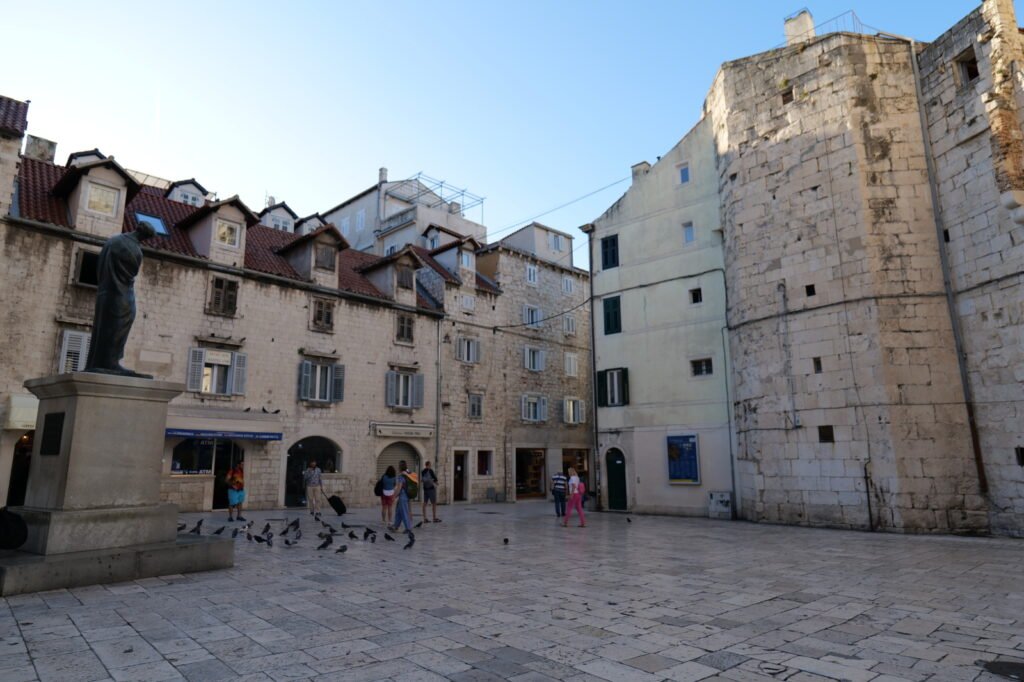
Risk of Terrorism in Croatia
This is one of those travel safety worries that’s so hard to talk about or predict because it feels so out of our control. But there haven’t been any recent major incidents involving terrorism in Croatia.
Croatia is not a country that features often on international terror alerts, and the local government keeps a close eye on public security with extra police and resources for popular tourist areas and around major transport hubs.
However, the UK government did recently update their terrorism warning for Croatia: “Although there’s no recent history of terrorism in Croatia, attacks cannot be ruled out. Attacks could be indiscriminate, including in places visited by foreigners.”
But while the wording sounds scary, this is definitely more of a global warning rather than a Croatia-specific warning. You should remain vigilant of your surroundings, especially in busy areas, but not paranoid.
Katie’s Top Tip: If you ever feel unsure about an area or event, duck into a shop, café or hotel and ask a local. I’ve done this loads of times, and Croatians are usually more than happy to help or reassure you!
Risk of Violent Crime in Croatia
This section feels hardest to write, because I know the worry of violent crime is one of the things that makes solo travel feel the scariest. But the reality is, violent crime in Croatia is rare, and it’s even more rare to be targeted as a tourist.
To put this into perspective, Numbeo reports that the risk of violent crime in Croatia is rated at just 19.48, which is considered very low, especially when you compare it to other countries in Europe.
Most violent incidents that do occur involve local disputes or alcohol-fuelled arguments in nightlife settings, rather than random attacks on strangers.
So as a solo female traveller, your biggest risk would be finding yourself in the wrong place at the wrong time (for example at a dodgy nightclub or in an isolated area after dark), but these risks can be managed with proper safety precautions.
And the risk of this is definitely no higher in Croatia than in most other popular tourist destinations in Europe.
Just be sure to use the same street smarts you’d use at home and always, always trust your gut. If a street feels sketchy or someone gives you a weird vibe, just leave. You don’t owe anyone your time, explanation or energy.
Katie’s Top Tip: If you’re out late or unsure of the vibe of a place, call a taxi via a trusted company rather than walking or waiting at a bus stop alone. And this isn’t about being fearful or paranoid, either. It’s just about making the safest choice so you can relax and enjoy your trip.
Risk of Harassment in Croatia
Unfortunately, street harassment is possible in Croatia, but it’s not common, and it’s definitely less intense than in many other European countries.
Most locals are respectful and keep to themselves, but in certain settings (bars, clubs, very touristy beaches,) you might experience some unwanted attention.
Think: stares, cheesy lines, a guy staying a bit too long after you’ve told him no thanks… Sadly, we’ve all been there. But for the most part, it’s more awkward than aggressive.
During my own travels, I’ve found the level of harassment in Croatia to be much lower than countries like Italy or France. And a firm but calm “no” or even just walking away, is usually enough to shut it down.
In the stats, Croatia also ranks very low when it comes to concerns about being attacked because of your gender, ethnicity or religion. And like said, I personally didn’t experience any harassment or unwanted attention during my solo trip to Croatia.
And again, this isn’t specific to women travellers – it’s the kind of thing that can sadly happen in nightlife settings, to any woman, anywhere.
Katie’s Top Tip: If you ever feel unsafe or pressured, step into the nearest bar or shop and speak to staff. And as I said before, don’t be afraid to create a little white lie (like “my boyfriend is just inside”) to get out of an uncomfortable situation fast.
Risk of Pickpocketing in Croatia
Pickpocketing deserves its own mention because it’s the most common crime tourists deal with in Croatia, especially in busy areas like Dubrovnik’s old town, ferry queues, or crowded buses. And it’s also frustratingly easy to fall for, even when you think you’re being careful and following all of the solo travel safety best practices.
These thieves are subtle. You might feel a bump on a packed bus or get distracted by someone asking for directions while their friend reaches into your bag. It’s not at all personal or targeted – it’s just business for them. And, unfortunately, they’re very good at what they do.
The key is to stay one step ahead of wannabe pickpockets. Don’t keep your phone in your back pocket. Don’t sling your bag behind you on a crowded street. And if someone’s acting overly friendly or pushy, always assume there’s an ulterior motive. It’s better to be viewed as rude or cold than to have your belongings taken.
Katie’s Top Tip: Always keep one hand on your (preferably cross-body) bag in crowds, and never store your passport, phone, and money in the same place. Split them up between inner pockets so one moment doesn’t ruin your whole trip.
Risk of Scams in Croatia
Like most tourist destinations, Croatia has its fair share of scams, but most are small-scale, and you can usually spot them coming once you know what to look out for.
You also won’t encounter aggressive hustling like in some cities, but there are a few common setups: dodgy taxi drivers overcharging tourists, inflated prices from street sellers or unauthorised, “free” walking tours that pressure you into big tips at the end. Scammers will target tourists who look unsure or unprepared, so the more confident and informed you appear, the less likely you are to be targeted.
One thing I personally experienced during my solo Croatia trip was a taxi scam in Zadar. I was tired and just wanted to get to my accommodation so, against my better judgement, I grabbed a taxi waiting around the bus station. We agreed on a price for the short 8 minute ride, but when we arrived (with zero traffic or delays,) the driver more than doubled the fare. Alone in his car, I chose to pay his inflated, scam rate. My safety in that moment was worth so much more than the money.
After a little cry back at my Airbnb, I dusted myself off and headed out to catch the most gorgeous sunset that reminded me why this trip to Croatia was still worth it. The lesson here? Always book taxis through trusted apps or phone bookings rather than picking one off the street, especially near transport hubs. These things will unfortunately happen in solo travel, but they don’t have to ruin your trip.
And most locals are genuine, honest and welcoming, so don’t let the fear of scams ruin your experience. But it is always good to be aware and a little sceptical when money is involved.
Katie’s Top Tip: When you’re exhausted or stressed, scams feel easier to fall for. That’s exactly when you need a researched safety net to fall back on which, in my case, would’ve been a pre-booked ride from a reputable company.

Croatia’s Emergency Number
Knowing what to do if something goes wrong is just as important as avoiding danger in the first place. In Croatia, the emergency number is 112. This is the same number for all of Europe. You can call this for police, medical help and fire services, and it’s free from any phone.
Katie’s Top Tip: Before your trip, add 112 to your phone contacts under something like “Emergency – Europe” and screenshot your accommodation address. That way, if you’re panicked, you won’t have any trouble explaining where you are. It’s also a good idea to keep your embassy contact details in your phone, just in case.
The Safest Places to Visit in Croatia
While Croatia is generally safe throughout the country, some spots stand out for being extra easy-going, peaceful and well set up for solo female travellers. So if you’re feeling even a tiny bit nervous about your solo trip to Croatia, these are great bases for exploring:
Dubrovnik is a top pick for many first-time solo travellers. It’s beautiful, walkable, and full of other travellers, so you’ll never stick out or feel alone. The old town can get busy, but it’s well-patrolled and rarely feels unsafe, even at night.
Zadar is another city that flies a bit more under the radar. It’s super relaxed, smaller than Split or Dubrovnik, and has a very chill, local vibe. Plus, it’s got (allegedly) the best sunsets in the world, a quirky sea organ, and a beautiful old town to explore. What’s not to love?!
Rovinj, in Istria, is a picture postcard town and Croatian hidden gem that is incredibly calm. Think colourful buildings (a bit like Venice, but much quieter,) cobbled streets, and a much slower pace of travel…
Katie’s Top Tip: If it’s your first solo trip, pick a city that’s both walkable and well-connected, like Dubrovnik or Split, and be sure to stay somewhere central. Being able to walk everywhere will give you a real confidence boost.
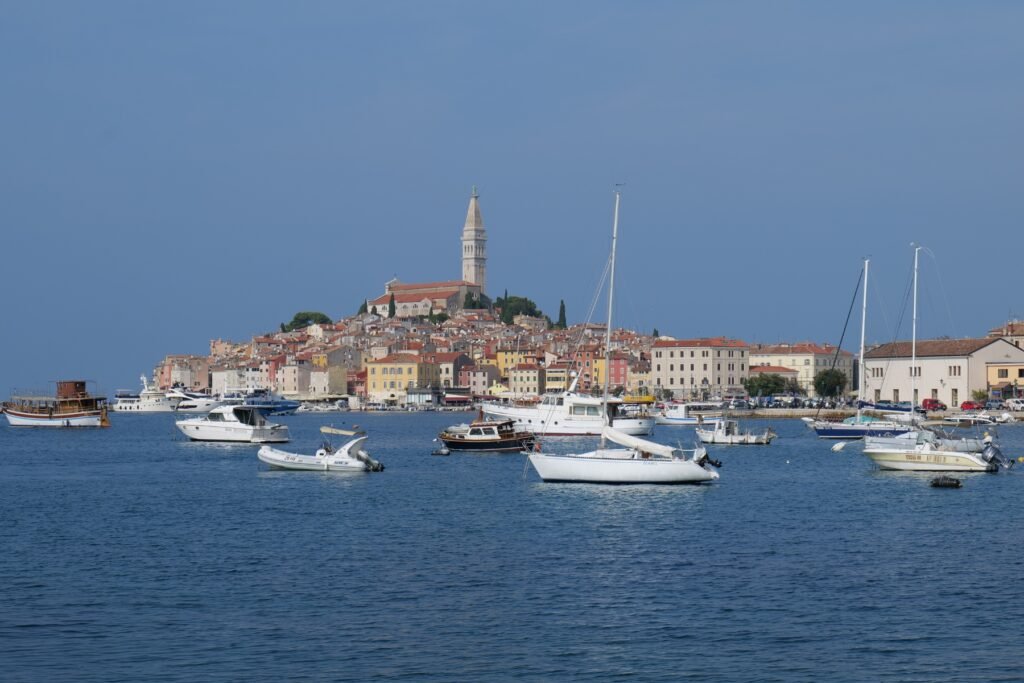
Places to Avoid in Croatia
I’m not a fan of fear-mongering, but I do want to keep it real in this Croatia solo travel safety guide. While Croatia is mostly safe, there are a few places and situations I’d recommend steering clear of:
Isolated areas after dark – especially beaches, parks, or empty backstreets – aren’t the place to be hanging around alone at night. This isn’t to say something will definitely happen, but if something does, there’s usually no one around to help.
Certain nightlife-heavy areas, like the party zones in Split or Hvar after midnight, can get rowdy. And while it’s totally great to go out and enjoy yourself, just be mindful that drunk crowds = higher risk of harassment, petty crime, and getting caught up in someone else’s drama. I mean, who needs that on holiday?!
Border regions or rural towns near Bosnia can feel very quiet and under-policed. If you’re heading somewhere off-the-beaten-path, double-check reviews and travel guides, and keep someone you trust in the loop about where you are.
Katie’s Top Tip: If you’re unsure about a place, hop onto my favourite solo travel tool: Google Street View. It’s a great way to get a feel for a neighbourhood’s vibe! I do this all the time, especially when choosing accommodation in a city I haven’t visited before.
Is Dubrovnik Safe for Solo Female Travellers?
Yes, Dubrovnik is generally very safe for solo female travellers, and it’s also one of the most magical places to visit in Croatia, despite the mass tourism. The old town feels like something out of a fairy tale, and while it gets crowded (especially in peak season,) the high foot traffic mostly just adds to the sense of safety.
Because Dubrovnik relies heavily on tourism, the city also goes out of its way to be welcoming and orderly. You’ll see a larger police presence than in other Croatian cities, clean streets, and lots of signage in English. Pickpocketing is your main concern in Dubrovnik – especially near Pile Gate and at the base of the city walls – but with those basic precautions we talked about earlier, you’ll be just fine.
However, Dubrovnik is definitely not the cheapest or most laid-back spot in Croatia. Visiting the city can feel hectic and overwhelming during cruise season, so if you’re wanting a calmer solo trip, consider visiting in shoulder season (April, May, September, October.) I visited in early October and it was so much quieter than I thought, plus the weather was still great!
Katie’s Top Tip: The steps in Dubrovnik old town are no joke. Pack lightweight shoes with good grip, and avoid wandering those steep side streets at night if they’re not well lit. Slippery cobbles + dark = not at all the vibe we’re going for!
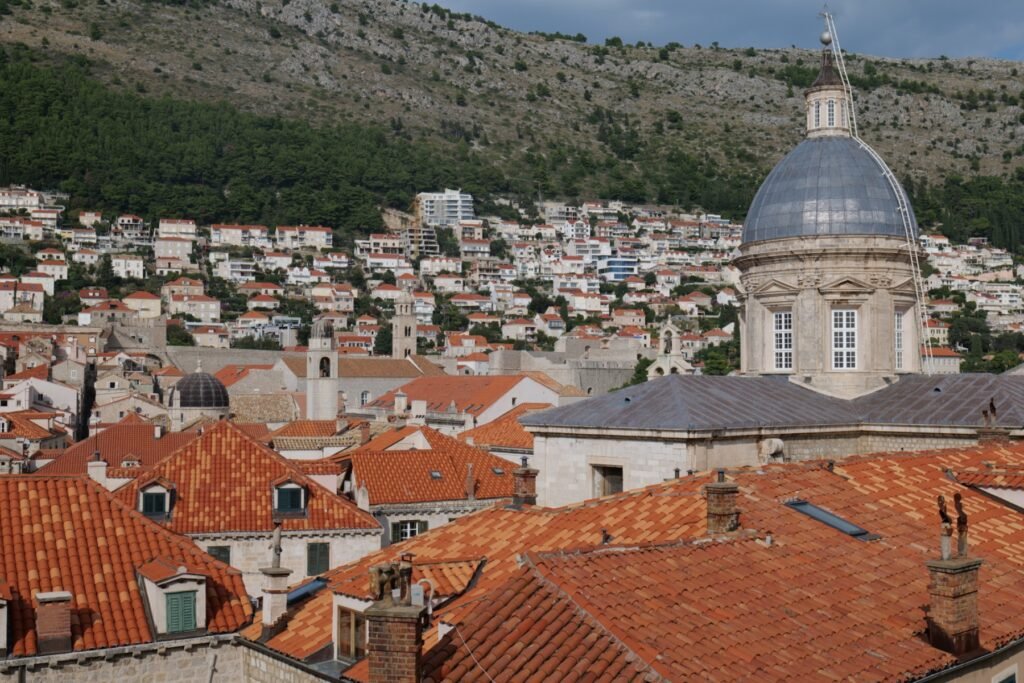
Is Zadar Safe for Solo Female Travellers?
Taxi scam incident aside, Zadar felt the safest and most relaxed city during my trip to Croatia as a solo female traveller. It’s compact, super walkable, and has a friendly, local vibe that makes it feel more like a big town than a tourist city.
I spent a few days in Zadar alone and felt completely safe walking around, even after watching the breath-taking sunset along the seafront promenade. The crowds are much more chill than in places like Split or Dubrovnik, and there’s far less of a party scene.
What’s also great about Zadar is its location. You can base yourself in the city and do day trips to loads of hidden gems in Croatia, like Plitvice Lakes or the Kornati Islands, without worrying about travel logistics.
Katie’s Top Tip: Don’t miss the Sea Organ at sunset. Tourists come here to sit and reflect as the sun goes down, and the atmosphere feels safe and calm.
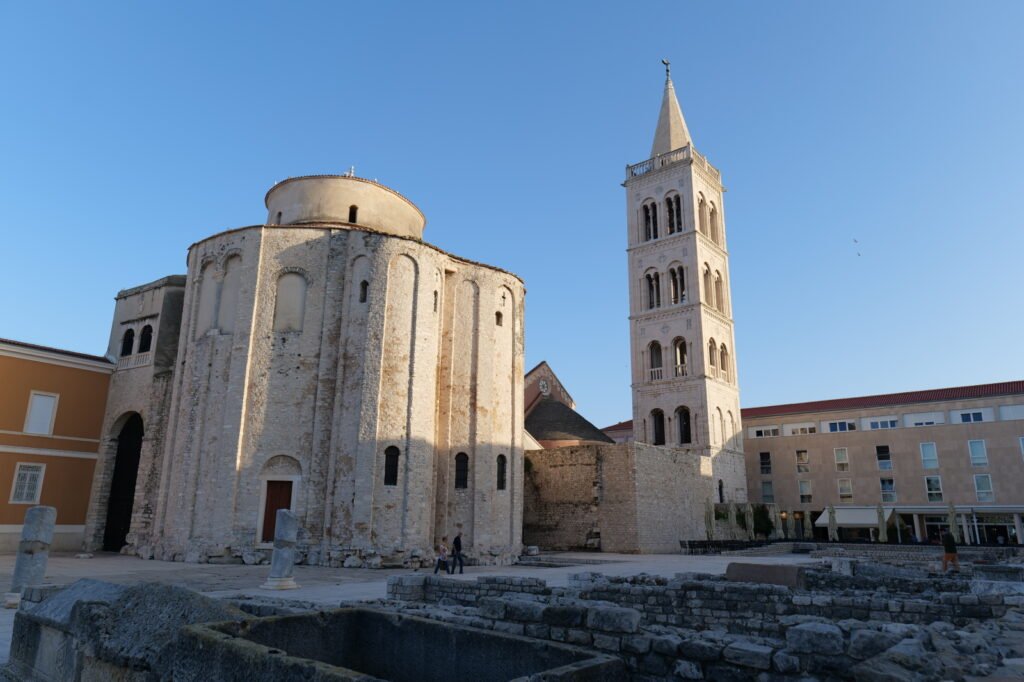
Is Split Safe for Solo Female Travellers?
Split is still safe, but it definitely has more edge to it than some other Croatian cities, so it helps to stay alert, especially at night. That doesn’t at all mean that it’s dangerous, just that Split is a busy, lived-in city with more nightlife and a local, working vibe.
During the day, you’ll love wandering Diocletian’s Palace, exploring the Riva promenade or picking up a speedboat to explore the islands. And I also felt totally fine walking around the old town solo during the day, keeping my bag zipped and my valuables out of sight.
Where you need to be more cautious is around the clubs and bars late at night. Like any lively city, drinking culture brings its own risks and I didn’t feel as comfortable wandering Split at night as I did in Dubrovnik and Zadar. So know your limits, keep an eye on your drink (and the time,) and make sure you always know how to get back to your accommodation safely.
Katie’s Top Tip: Stay near the old town so you’re close to everything without needing to walk far at night.

Is Pula Safe for Solo Female Travellers?
Pula, like the other Croatian cities, is generally safe for solo female travellers in Croatia. It has a quieter, more local vibe than other coastal cities, so it’s a great choice if you’re not into big tourist crowds but still want Roman ruins, sea views and a charming old town to explore.
One of the best things about Pula is that it feels low-key. It doesn’t have that high-stress, big-city buzz. Locals go about their day, tourists are still around, and you’re unlikely to feel overwhelmed or unsafe walking around during the day as a solo female traveller.
That said, Pula is more spread out than cities like Zadar or Dubrovnik, so just be mindful of whether you’re booking a place out of the centre – especially if you plan to be out at night. I personally decided not to explore Pula at night during my trip, as I chose accommodation near the bus station. Pula bus station is located slightly out of the city centre, and so I didn’t feel comfortable walking those quieter streets after sunset.
Katie’s Top Tip: Public transport in Pula is reliable but not super frequent. If you’re staying outside the old town and plan to explore at night, it’s worth budgeting for taxis so you’re not walking long distances on quieter streets, alone in the dark.
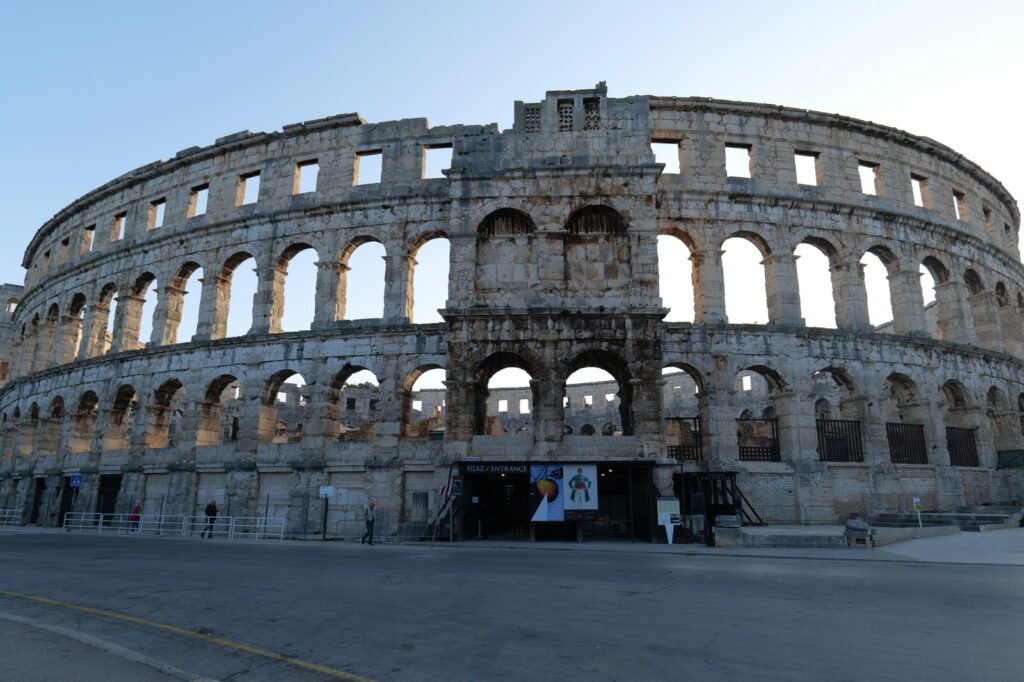
Is Croatia Safe at Night?
Generally? Yes! Croatia is safe to walk around at night, especially in well-lit city centres, old towns, and around popular tourist hotspots. But like anywhere, there are a few caveats.
In places like Dubrovnik, Split and Zadar, you’ll find other tourists out sightseeing or grabbing late dinners until 10 or 11pm, and the atmosphere stays lively until then without feeling unsafe.
But once the crowds thin, if you’re not ready to head home just yet, try to avoid quiet parks, alleys, or poorly lit side streets.
Crime rates for violent crime at night are also low, but alcohol-related incidents will spike late at night in party-heavy areas like Split and Hvar. That’s less about you and more about being around unpredictable people (who are mostly fellow tourists, by the way, not locals!) which you’ve more than likely experienced in your home city too!
For even more reassurance, the local safety stats back this up, with Croatia scoring a high rating for feeling safe walking alone at night.
Katie’s Top Tip: If you’re ever unsure walking back to your accommodation at night, call a trusted local taxi service for extra safety and peace of mind.
Nightlife in Croatia
If you’re planning to experience the local nightlife during your solo trip, Croatia has some truly iconic spots. From open-air beach clubs to old town wine bars, there’s something for every solo traveller. But, Croatian nightlife can get rowdy, especially in places like Split and Hvar and especially during summer. Rowdy doesn’t necessarily mean unsafe, but it’s important to be smart: know your alcohol limits, don’t accept drinks from strangers, always watch your drink being made… You know the drill!
Katie’s Top Tip: When heading out at night, tell someone where you’re going (even if it’s just a quick message to a friend back home.) I also always set a check-in reminder on my watch, just in case I forget to text once I’m back at my accommodation.

Safest Time of Year to Visit Croatia
Croatia is safe year-round. But if you want the least crowded and safer experience, aim for shoulder season: May–June or September–October.
During these months, the weather is still lovely, the locals are less overwhelmed by mass tourism, and the cities feel calmer and more walkable. You’ll still find other travellers around (which definitely helps with solo travel confidence,) but fewer big party crowds than in peak season.
Winter can be great too, especially in Zagreb (which has one of Europe’s best Christmas markets,) but many of the popular, smaller coastal towns shut down and feel pretty empty, which can make solo travel feel lonely.
Katie’s Top Tip: I recommend late September/early October as the best time for solo travel in Croatia. This is when I visited and I can confirm that the weather is still lovely, the sea is still warm, the old towns are so much quieter, and you still feel very safe.
Is English Spoken in Croatia?
Yes! English is widely spoken in Croatia, especially in cities and among younger locals. You’ll also find menus, signs and public transport info in English in all major tourist destinations.
Having said that, you are in a European country with its own language, so don’t expect fluency everywhere. In smaller villages or rural areas, locals might only speak Croatian, but most will still try to help you if you smile, use simple words, or point to what you need.
Katie’s Top Tip: Download Croatian on Google Translate for offline use. I’ve used it loads in tiny bakeries, pharmacies, bus stations, and countless more situations. I also like the photo translate feature for menus or understanding ingredients.
Is Public Transport Safe in Croatia?
Croatia’s public transport is safe and affordable, and the majority of travellers will use it to get around with no issues.
Buses are the main way to travel between Croatian cities. Companies like Flixbus and Arriva are reliable, and it’s totally normal for solo travellers to ride alone. During my solo trip to Croatia, I took buses between Kotor (Montenegro) and Dubrovnik, Dubrovnik and Split, Split and Sibenik, Sibenik and Zadar, and Pula and Rovinj, and never once felt unsafe. Just make sure to keep your day bag with you, and don’t store any valuables in your checked luggage.
Local buses are also safe in Croatia, but less reliable than major routes run by the international companies. You also won’t need to use them much during your trip, as you’ll find that some shorter connections are easier, quicker and more reliable with companies like Arriva or Flixbus. The exception to this is in Dubrovnik, where you’ll need a local bus to get from the main bus station to the city centre.
Trains in Croatia are limited and less frequent than buses, but they’re still clean and safe. Most of the train routes start in Zagreb and head East. If you want to get to the coast, you can get to Split from Zagreb by train.
Katie’s Top Tip: When booking buses, go for daytime journeys, especially if you’re new to solo travel. Not only is it safer and less stressful, but you’ll also get to enjoy the views, and Croatia’s bus routes are seriously scenic!
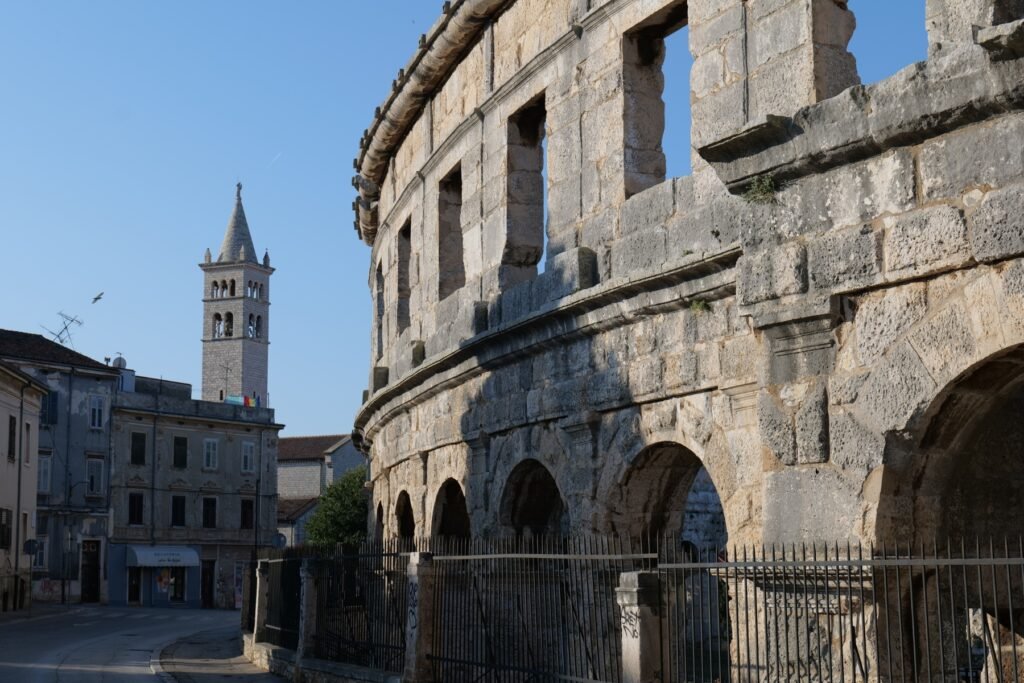
Top Solo Female Travel Safety Tips for Croatia
Is Croatia safe for solo female travellers? Yes – with these tips that helped me feel calm, confident, and totally in control on my solo trip to Croatia:
- Book central accommodation so you’re never stuck walking far alone at night.
- Buy a SIM card or eSIM so you’re never without internet.
- Eat solo at lunch if you’re nervous about dining alone – it’s quieter and much more casual.
- Trust your gut instincts. If something feels off, it probably is.
- Stay in touch with those you trust at home, and share your itinerary with them if you feel comfortable with that.
- Always book your ride in advance, especially at transport hubs where scam drivers are common.
So, Is Croatia Safe for Solo Female Travellers?
So, is Croatia safe for solo female travellers? In my opinion, Croatia is one of the safest, easiest, and most rewarding countries in Europe for solo female travellers. And no, that doesn’t mean it’s perfect or entirely risk-free. But then again, what place is?
What makes Croatia such a great solo travel destination is the combination of low crime, friendly locals, easy transport, and a culture that welcomes women travelling on their own. You don’t need to constantly look over your shoulder or feel paranoid during your trip, either. Just use your common sense, stay aware of your surroundings, and you’ll be absolutely fine!
Have you visited Croatia before? Or are you planning your first solo trip there? I’d love to hear your thoughts or answer any questions in the comments!
Discover More of Croatia:
- How Many Days Do You Need in Dubrovnik? (+ Itinerary Ideas!)
- Is Dubrovnik Safe For Solo Female Travellers? An Honest Guide
- 11 Fun Things To Do in Dubrovnik Alone (For First-Timers)
- 15 Unmissable Things to Do in Korcula, Croatia
- Is Croatia Safe for Solo Female Travellers? An Honest Guide
Grab Your Solo Female Travel in Europe Starter Kit:
Pin Me For Later!
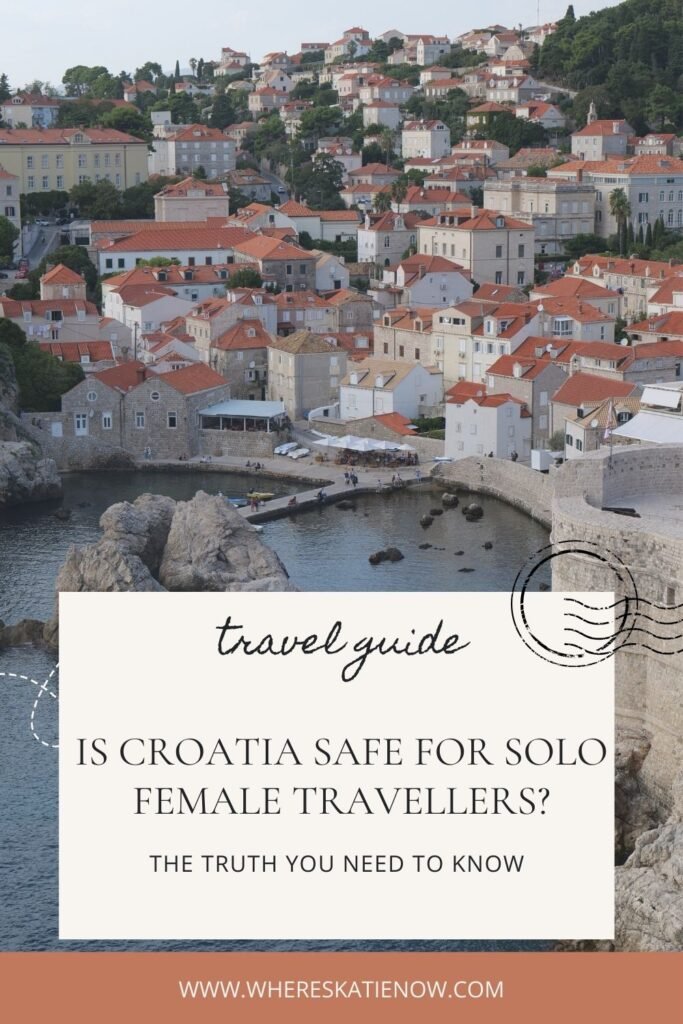
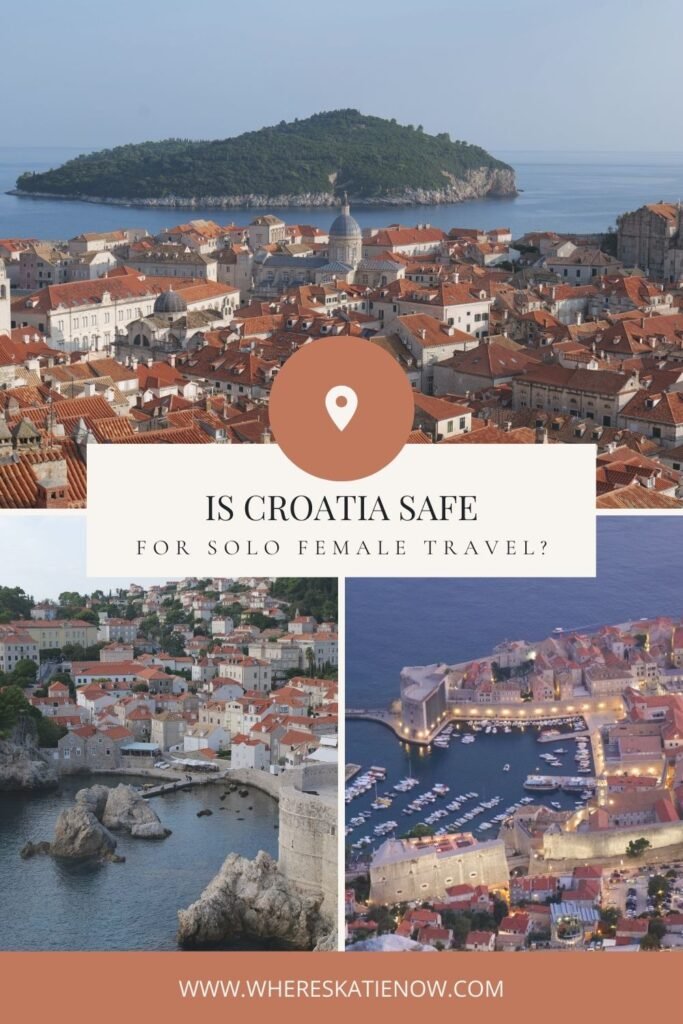
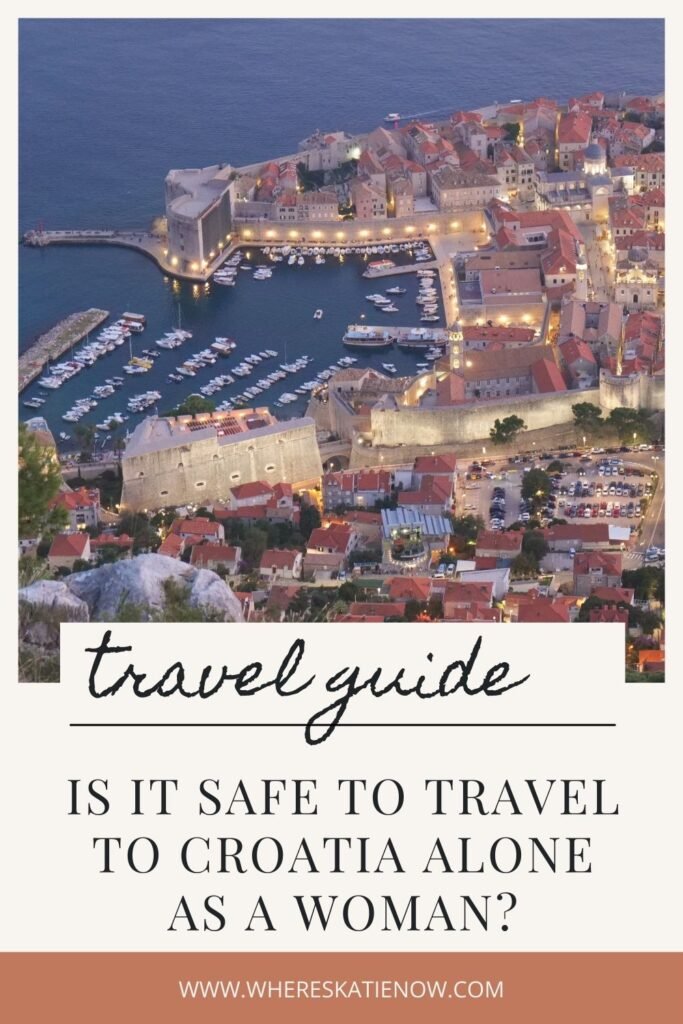

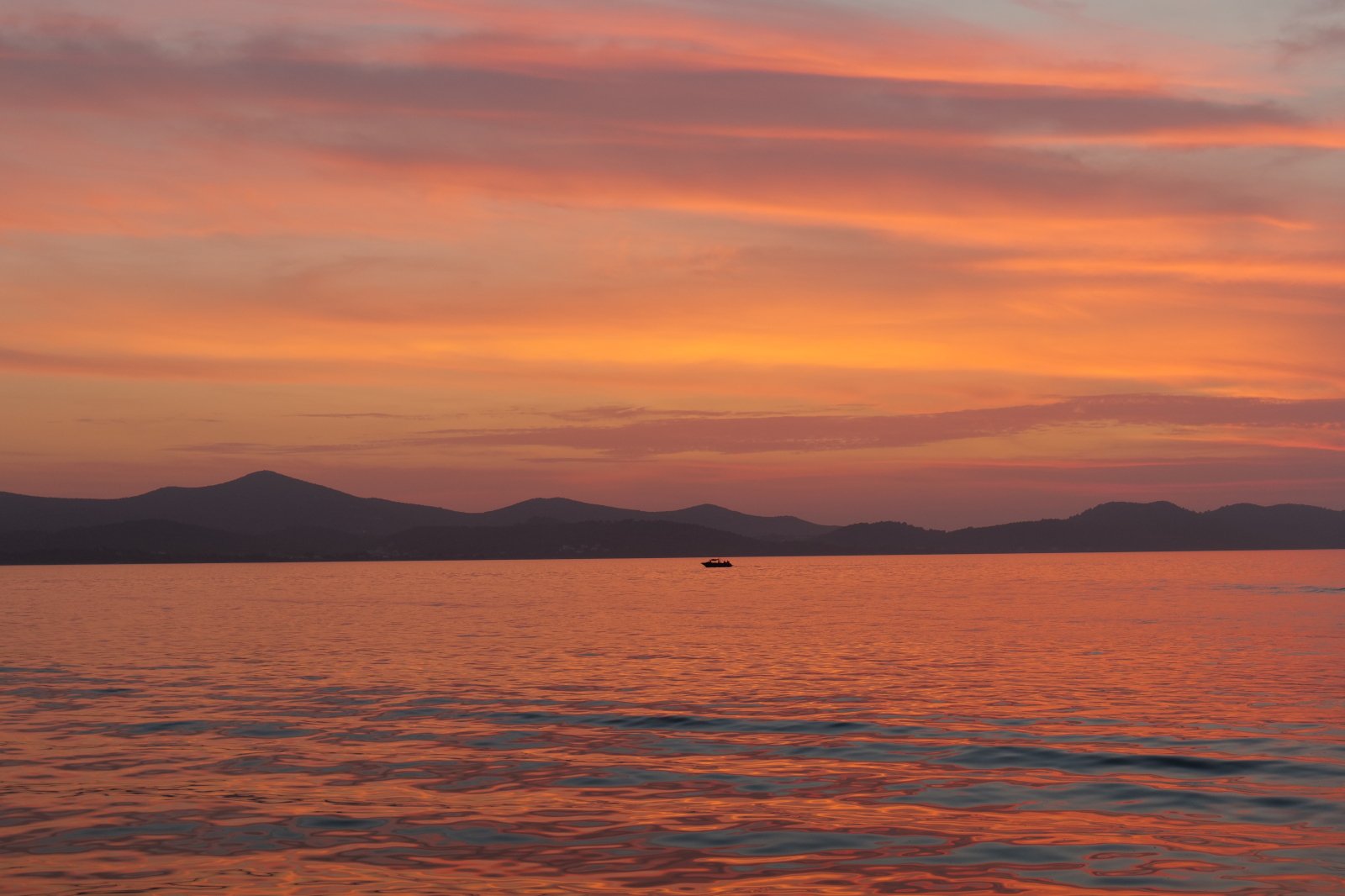
Covering 30 kilometers in about 30-45 minutes, the drive from Dubai Airport to Atlantis The Palm is straightforward. Taxis provide a fast option, or book a limo for a more indulgent experience.